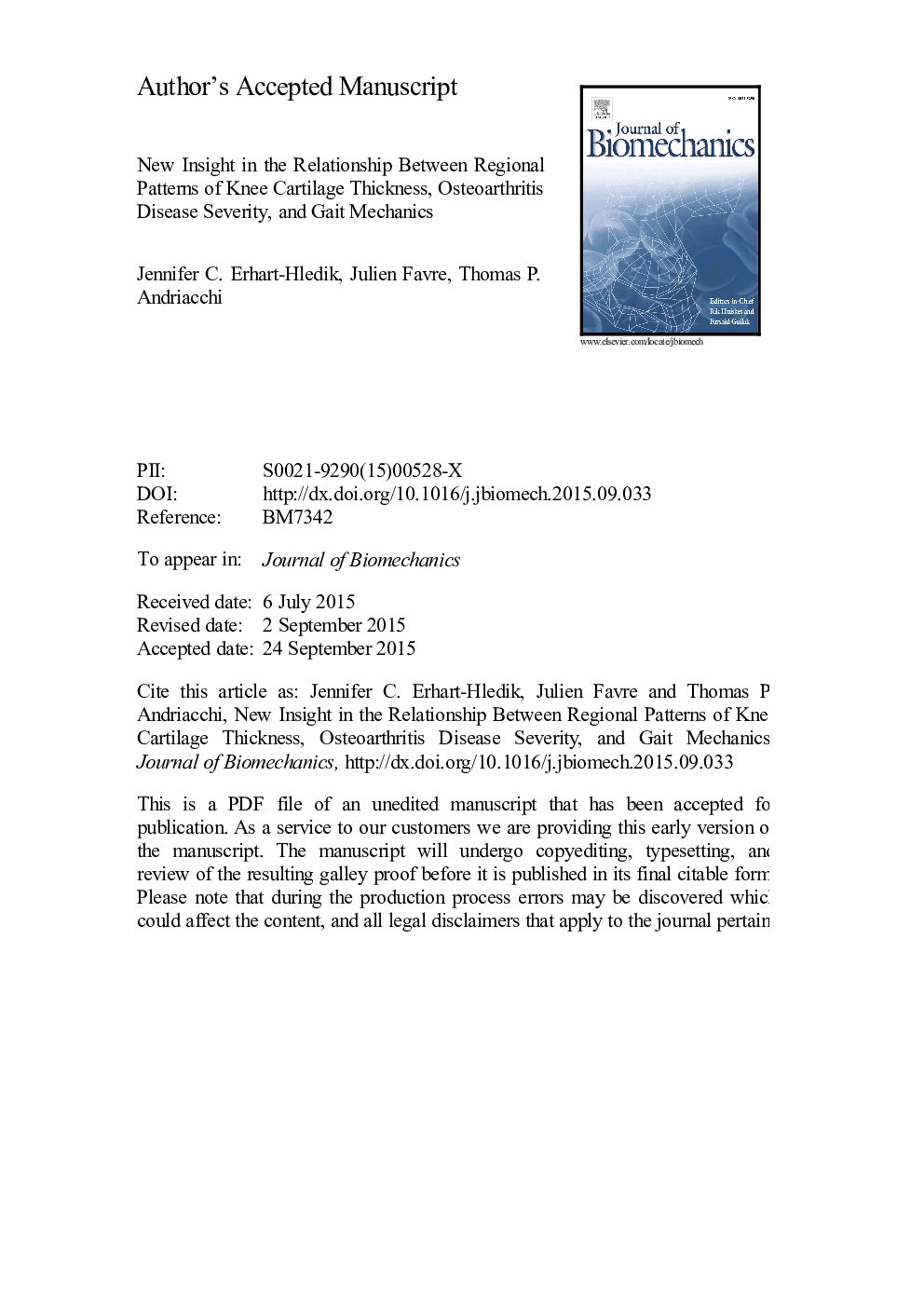| Article ID | Journal | Published Year | Pages | File Type |
|---|---|---|---|---|
| 10431522 | Journal of Biomechanics | 2015 | 29 Pages |
Abstract
To test if the relationship between knee kinetics during walking and regional patterns of cartilage thickness is influenced by disease severity we tested the following hypotheses in a cross-sectional study of medial compartment osteoarthritis (OA) subjects: (1) the peak knee flexion (KFM) and adduction moments (KAM) during walking are associated with regional cartilage thickness and medial-to-lateral cartilage thickness ratios, and (2) the associations between knee moments and cartilage thickness data are dependent on disease severity. Seventy individuals with medial compartment knee OA were studied. Gait analysis was used to determine the knee moments and cartilage thickness was measured from magnetic resonance imaging. Multiple linear regression analyses tested for associations between cartilage thickness and knee kinetics. Medial cartilage thickness and medial-to-lateral cartilage thickness ratios were lower in subjects with greater KAM for specific regions of the femoral condyle and tibial plateau with no associations for KFM in patients of all disease severities. When separated by severity, the association between KAM and cartilage thickness was found only in patients with more severe OA, and KFM was significantly associated with cartilage thickness only for the less severe OA subjects for specific tibial plateau regions. The results support the idea that the KAM is larger in patients with more severe disease and the KFM has greater influence early in the disease process, which may lessen as pain increases with disease severity. Each component influences different regions of cartilage. Thus the relative contributions of both KAM and KFM should be considered when evaluating gait mechanics and the influence of any intervention for knee OA.
Related Topics
Physical Sciences and Engineering
Engineering
Biomedical Engineering
Authors
Jennifer C. Erhart-Hledik, Julien Favre, Thomas P. Andriacchi,
